
Christmas is by far the most famous holiday of the winter season, followed closely by New Year’s Eve and Day. Retailers count down the shopping days to Christmas (though they are sometimes loath to refer to it by name to avoid alienating non-Christians) once Thanksgiving is over.
Christmas is by no means the only winter holiday, however. As a matter of fact, it is not even the season’s only holiday with Christian origins.
To compile a list of winter festivals and other celebrations that aren’t Christmas, 24/7 Tempo reviewed the holiday calendars of more than a dozen countries.
Among the 14 feasts, holy days, and holidays on our list, there are seven celebrations besides Christmas that are observed by Christians. Three are observed mostly in Mexico – the Fiesta of Our Lady of Guadalupe; Las Posadas; and Día de Candelaria. Other Christian feasts are Yule, Saint Nicholas Day, Saint Lucia Day, and Mardi Gras. Many of these feasts are rooted in pagan rituals that became subsumed by Christianity. (Christianity, including Catholicism, is the world’s largest religion.)
“Ōmisoka” is the Japanese word for New Year’s Eve and is celebrated as the beginning of a new year with new possibilities. The Chinese New Year, based on the lunar calendar, usually begins in the middle of January. (Here are 22 Chinese New Year Don’ts – unless you want a year of bad luck.)
Bodhi Day celebrates the day that Siddhartha Gautama, Sakyamuni Buddha, achieved enlightenment. Lohri, named after a Hindu goddess, is a Punjabi festival celebrated at the end of the winter season in northern India.
Hanukkah, commemorating a successful Jewish revolt from antiquity, is observed over eight nights and has become a significant holiday on the Jewish calendar in recent decades.
Kwanzaa, the most recently created holiday on this list, reaffirms African family and social values, and is observed in America and the Caribbean. Boxing Day, first established in Victorian times, is celebrated in England the day after Christmas.
Click here to see 14 winter holidays that aren’t Christmas

Saint Nicholas Day
> Date: Dec. 5, 6, or 19
The Feast of St. Nicholas, commonly known as St. Nick’s Day is celebrated on Dec. 6 or in some places on the eve of the feast, Dec. 5. Some Eastern Orthodox congregations, as well as Christian Berbers, who use the ancient Julian rather than the present-day Gregorian calendar, celebrate the day on Dec. 19. Small gifts are exchanged on this day. St. Nicholas was a fourth-century bishop of Myra in Turkey, and is the patron saint of Russia and Greece, of various cities, and of sailors and children. He was known for his kindness toward children and for his generosity.
The feast became popular during medieval times, particularly in German-speaking countries, and is observed today in U.S. cities with large German or Dutch populations, such as Cincinnati, Milwaukee, Pittsburgh, St. Louis, and Cleveland. When famed cartoonist and Bavarian immigrant Thomas Nast created the earliest image of Santa Claus, he based in on St. Nicholas.
[in-text-ad]

Bodhi Day
> Date: Dec. 8
Bodhi Day celebrates the day that the “Historic Buddha,” also known as Siddhartha Gautama, Sakyamuni Buddha, achieved enlightenment. It was on this day that the royal Siddhartha Gautama awoke from meditation and the four noble truths were revealed to him.
There are two Bodhi Days on the Buddhist calendar. The secular day is the fixed date of Dec. 8. The other Bodhi Day is based on the lunar calendar and changes from year to year. The next lunar Bodhi Day is Dec. 30, 2022.
Bodhi Day is often celebrated by meditating and praying. Some Buddhists might decorate a Bodhi tree with lights and display statues of Buddha.
Fiesta of Our Lady of Guadalupe
> Date: Dec. 12
Our Lady of Guadalupe, patron saint of Mexico, is one of Catholicism’s most powerful cultural symbols. Her feast day is celebrated on Dec. 12 in Mexican parishes and neighborhoods with Masses and celebrations. The largest celebration is at the Basilica of Our Lady of Guadalupe in Mexico City, visited by 20 million pilgrims a year.
The feast has its origins from 1531, shortly after the Spanish arrived in Mexico, when the Blessed Virgin is said to have appeared four times to Juan Diego and told him that she was his mother and would take care of the Mexican people.
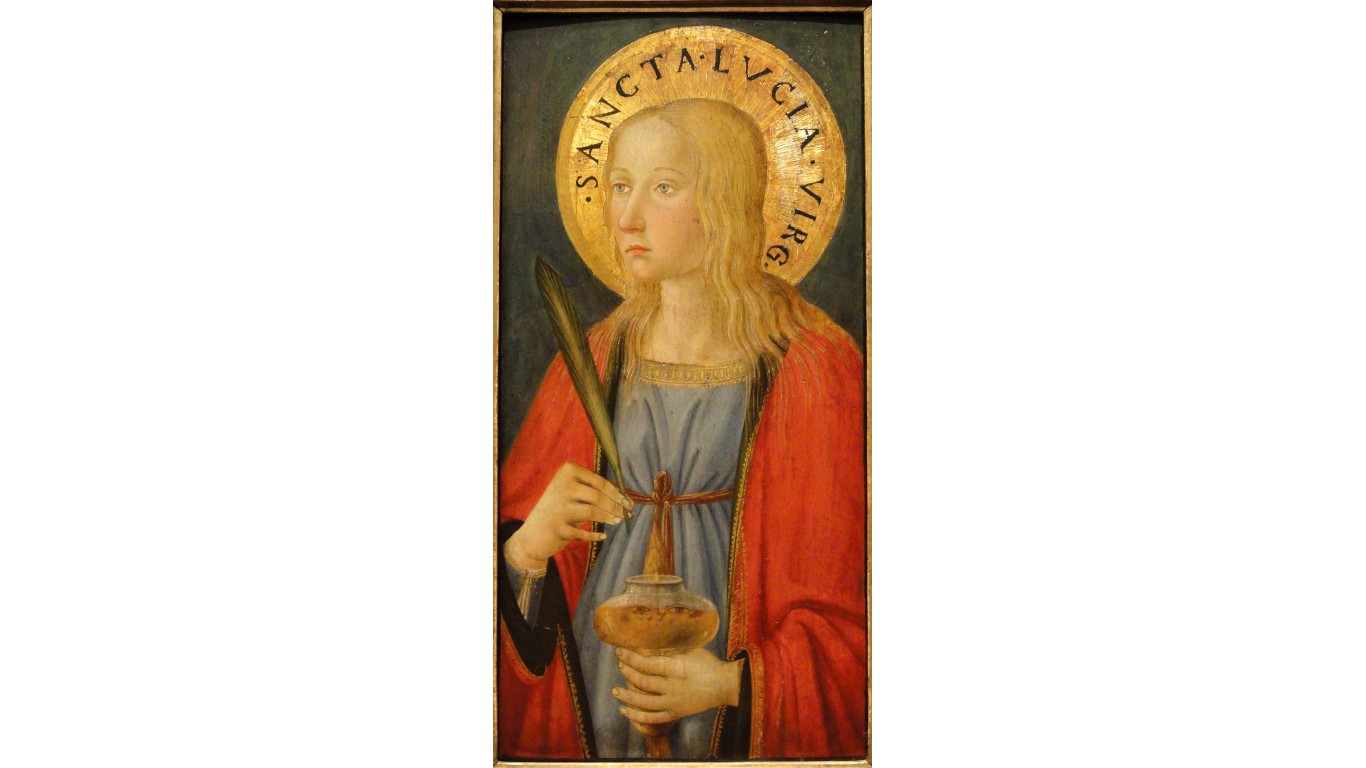
Saint Lucia Day
> Date: Dec. 13
Saint Lucia Day is an important Christian feast day held in Scandinavian countries. It is observed on Dec. 13, which on the old Julian calendar coincided with the winter solstice and was the shortest day of the year.
The day celebrates the life of Saint Lucia, a young Christian martyr. In legend, she would secretly bring food to persecuted Christians hiding in the catacombs under Rome, lighting her way with candles held in a wreath on her head, freeing her hands to carry items. The feast day is celebrated with a procession led by a young girl chosen to portray Saint Lucia, wearing a white gown, a red sash, and crown of candles.
During the feast, people eat sweet treats, including gingerbread and lussekatter, a saffron bun dotted with raisins.
[in-text-ad-2]
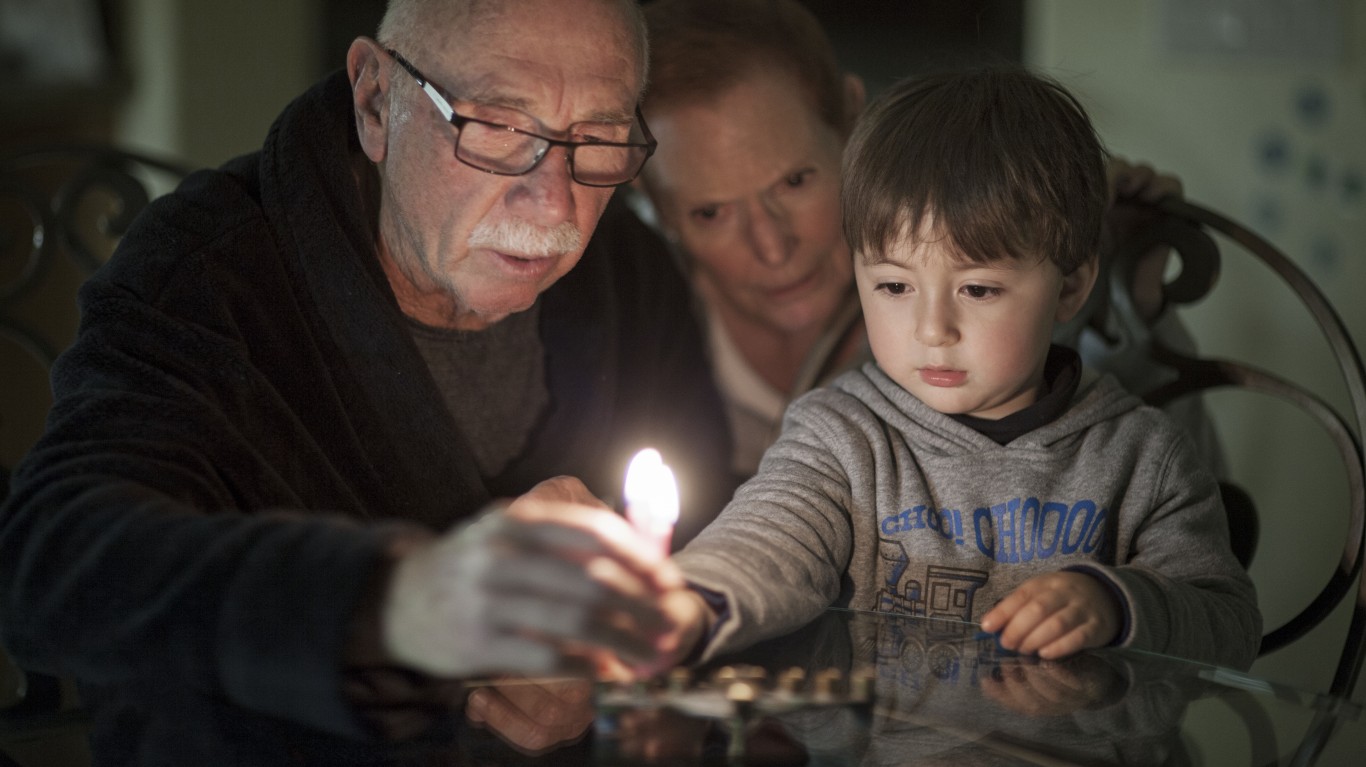
Hanukkah
> Date: Dec. 18-26, 2022
Hanukkah, or the Festival of Lights, is celebrated over eight days that vary from year to year according to the lunar calendar. The Jewish holiday commemorates the successful revolt led by the Maccabees over their Syrian-Greek overlords, and the rededication of the Second Temple in Jerusalem. According Jewish legend, following the revolt, the desecrated temple had only enough oil for one ritual nightly lighting of the menorah, a symbolic candelabrum. However, because of a miracle, that small amount of oil was able to last for eight days. The festival is seen as the triumph of light over darkness.
On each day of Hanukkah, Jews light one candle on the menorah, which has nine branches (one holds a candle used to light the other eight). During the feast, Jews play with a dreidel, a small spinning top; exchange presents such as foil-wrapped chocolate coins, called Hanukkah gelt, and more lavish gifts; and eat food fried in oil, such as potato latkes and jelly donuts.
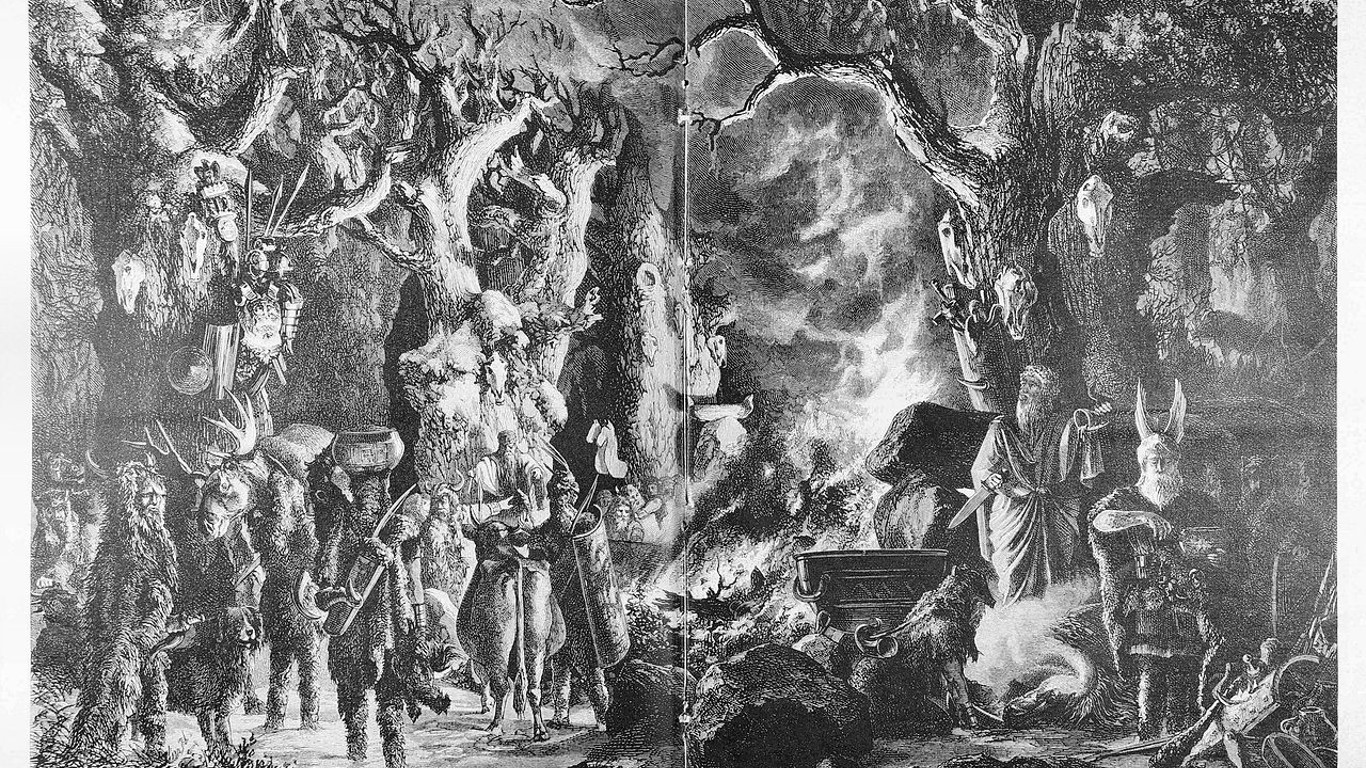
Yule
> Date: winter solstice – Dec. 21, 2022
Yule is a winter solstice event celebrated by Wiccans and other pagan groups. It focuses on rebirth and renewal, as the sun reaches its greatest distance from Earth and begins to head back. The origins of the feast rest with the Norse peoples. They called it Jul, and for them it was a time for feasting and carousing. Some historians believe sacrifices were a part of the observance, made to the gods and other supernatural beings.
Traditional customs such as the Yule log, decorating a tree, and wassailing can be traced back to Norse origins. A more recent take on the Yule log, probably from the 19th century, is a roulade-style cake decorated to look like a log, known by that name or, in French, as the bûche de Noël. Another carryover tradition from Yule to Christmas is the Yule goat. During the Christmas season in Sweden, large goats are constructed out of straw.
It is said that the 10th-century King Haakon Haraldsson of Norway merged the Norse Yule celebration and Christian Christmas during his reign.
[in-text-ad]
Las Posadas
> Date: Dec. 16 – 24
Las Posadas is a traditional – and in some Mexican communities a deeply religious – festival commemorating the search for shelter by Jesus’s parents, Mary and Joseph. The Augustinian friars are believed to have organized the first posadas in the late 16th century in Mexico.
Las Posadas is Spanish for “The Inns,” and during the festival, people form a procession, sing songs, and lead a donkey to visit homes as they symbolically seek shelter. Each night one home is designated as the inn, hosts a party, and displays a nativity scene. Before the party, the attendees may join together in prayer. At the party, guests eat traditional Mexican holiday treats. Children play with a piñata shaped like a star. On the final night of the festival, the party ends at church for the midnight Nativity Mass.
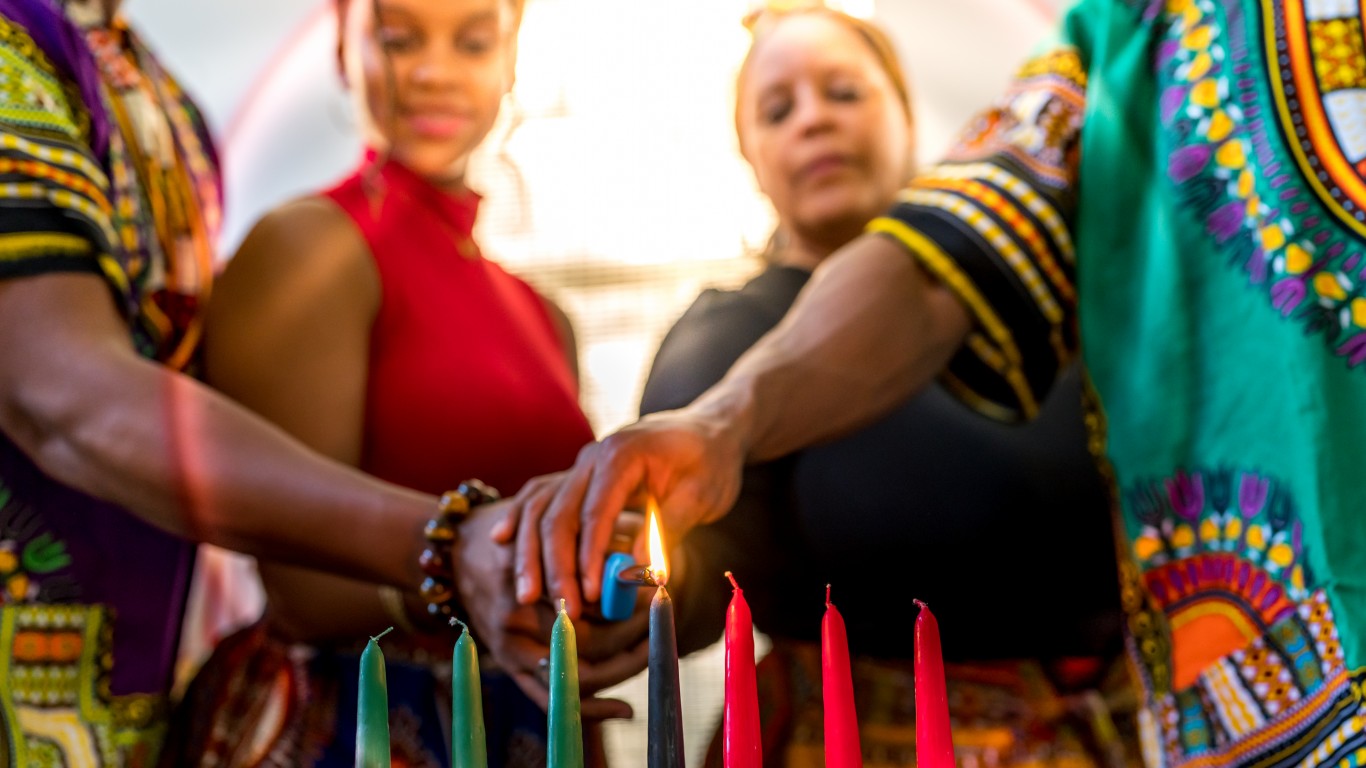
Kwanzaa
> Date: Dec. 26, 2022- Jan. 1, 2023
Kwanzaa is one of the more recent winter holidays, celebrated in the United States and in some Caribbean countries. The holiday affirms African family and social values. It was created in 1966 by Maulana Karenga, a professor of Africana studies at California State University in Long Beach.
The number seven is important in celebration of the holiday. The celebration, over seven days, acknowledges the seven principles of Kwanzaa: unity, self-determination, collective responsibility, cooperative economics, purpose, creativity, and faith. There also are these seven symbols: fruits, vegetables, and nuts; a straw mat; a candleholder; ears of corn; gifts; a communal cup signifying unity; and seven candles in the African colors of red, green, and black, symbolizing the seven principles.
On each of the seven days, the family lights one of the candles in the kinara, or candleholder.

Boxing Day
> Date: Dec. 26
Boxing Day, the day after Christmas, is observed in Great Britain and former British colonies such as Canada, Australia, and New Zealand. Because servants in Victorian England had to work Christmas Day, their employers gave them the next day off to visit families. It became its own holiday in 1871.
The origin of the “boxing” bit is murky. Some claim it stems from when the wealthy would give boxes filled with small gifts, money, and Christmas leftovers to their employees. Another theory holds that churches put out boxes for people to donate money to the poor. Dec. 26 is also St. Stephen’s Day, a Christian holiday associated with charity.
People of a certain social class used to go fox hunting in England on Boxing Day, but that activity was banned there in 2004. Now people go shopping for deals on the day after Christmas instead.
[in-text-ad-2]
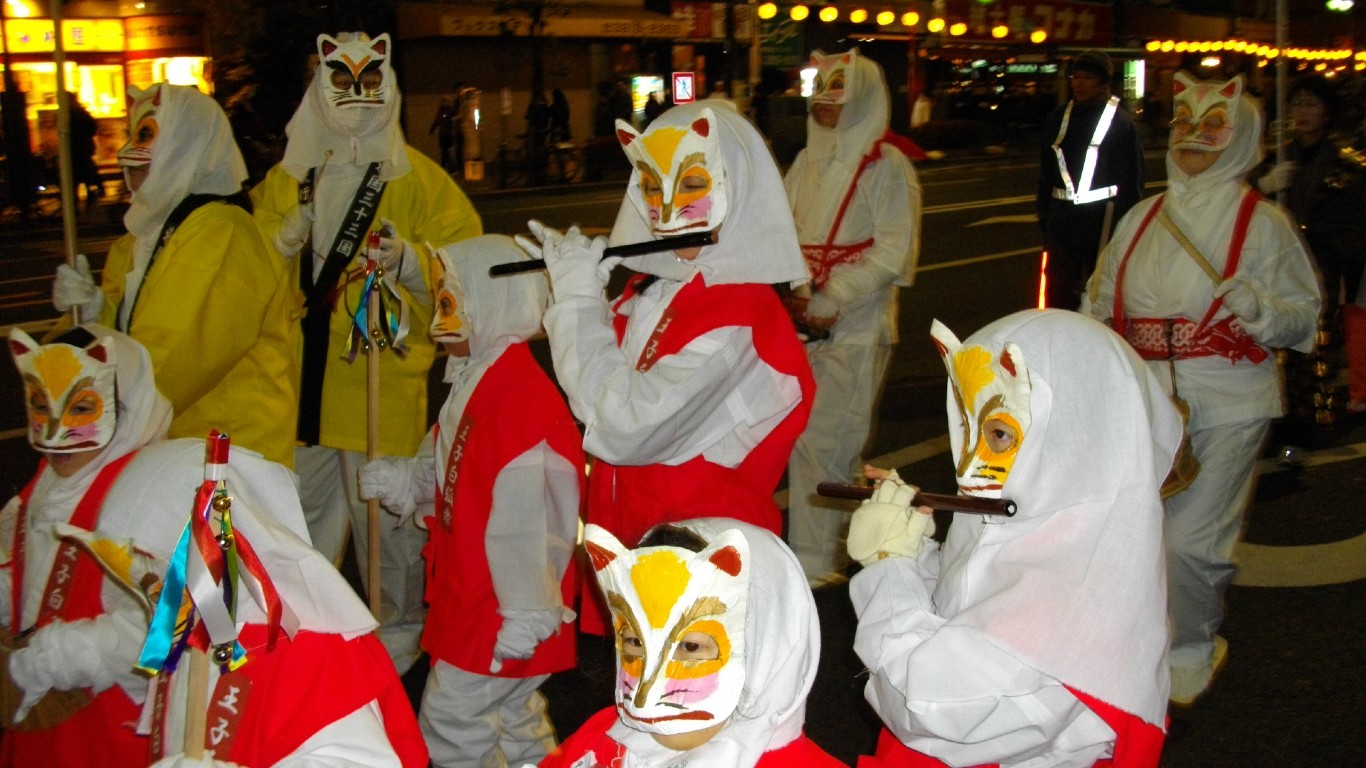
Ōmisoka
> Date: Dec. 31
“Ōmisoka” is the Japanese word for New Year’s Eve and is celebrated as the beginning of a new year with new possibilities. In preparation for the new year, many people deep clean their homes and remove clutter. The deep cleaning is called “osouji.” At 11 p.m. on New Year’s Eve, Japanese eat long noodles, which they believe gives one a long life and helps people cross over from one year to the next. Japanese also make a lot of food in the days leading up to the holiday because they believe it is unlucky to cook in the kitchen for the first three days of the new year.
It is also a time of reflection and spirituality, as many Japanese attend Shinto shrines at midnight. For the new year, a bell is struck 108 times to remove 108 Bonnou, the number of human desires and passions that cloud the human mind.
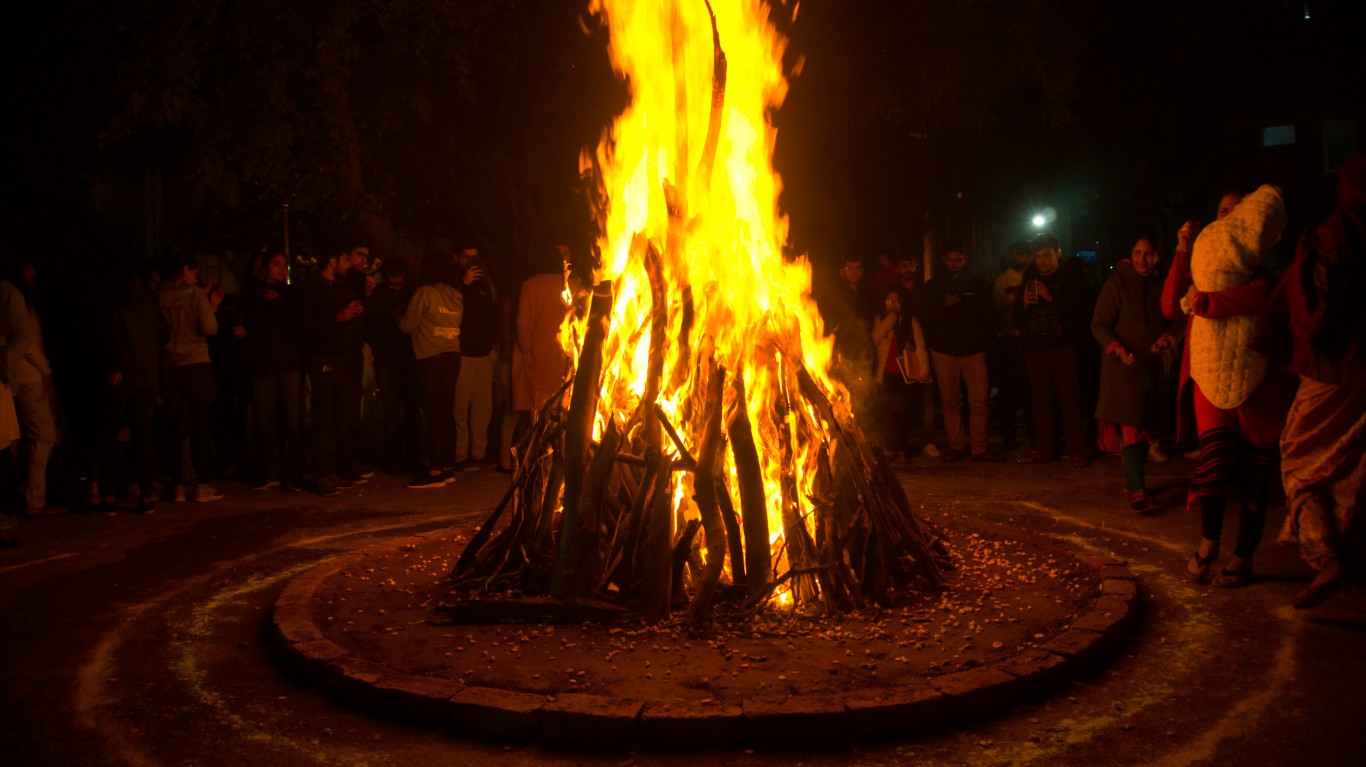
Lohri
> Date: Jan. 13, 2023
Lohri, named after a Hindu goddess, is a Punjabi festival celebrated at the end of the winter season in northern India. It marks the harvest of the winter crops and the end of the winter solstice. It celebrates the sun and the start of longer days. Lohri is observed by Hindus, Sikhs, and Muslims. In houses that have recently had a marriage or welcomed a new child, the celebration is particularly festive. During Lohri, people are encouraged to put all grudges and issues aside.
There is singing and dancing around sacred bonfires, and children go about homes singing the traditional folk songs about Lohri and Dulla Bhatti, a 16th-century folk hero from the region.
[in-text-ad]

Chinese New Year
> Date: Jan. 22, 2023
The date for the Chinese New Year changes each year according to lunar calendar. Usually, it falls on a day between mid-January and mid-February. In 2023, that day is Jan. 22. In China, each lunar cycle has 60 years and 12 years is considered to be a small cycle. Each of the 12 years has an animal sign: Rat, Ox, Tiger, Rabbit, Dragon, Snake, Horse, Sheep, Monkey, Rooster, Dog, and Pig. 2023 is the Year of the Rabbit.
Families hold reunion dinners the night before the new year. The most famous festival food is dumplings. Chinese also eat rice cakes, spring rolls, and fish.
A massive eruption of fireworks occurs once the new year begins. The popular new year greeting is “Guo nian hao,” which means something like “Pass the new year well.” Red is the color of the new year, in lanterns, paper strands, and lights. Children receive money in red envelopes. In Chinese culture, red is the symbol of happiness, wealth, and prosperity, and it keeps evil spirits at bay.

El Día de Candelaria
> Date: Feb. 2, 2023
El Día de la Candelaria, known in English as the Feast of the Presentation of Jesus Christ, is a Catholic holiday observed in some parts of Mexico. It commemorates the day when Jesus’s mother, Mary, presented him to the Temple in Jerusalem for the first time. The feast dates from the fourth century and is one of Christianity’s oldest feasts.
It’s also sometimes also known as the Feast of Purification of the Blessed Virgin Mary because Jewish traditions at that time forbade women from entering the temple until 40 days after childbirth, as they were considered “impure.” Candles, a symbol of purity, became associated with the feast.
Besides attending church, Candelaria is celebrated at home with a family dinner that features tamales. On Candelaria, people dress up a doll-sized version of baby Jesus called Niño Dios (Christ Child) and bring it to church with them.
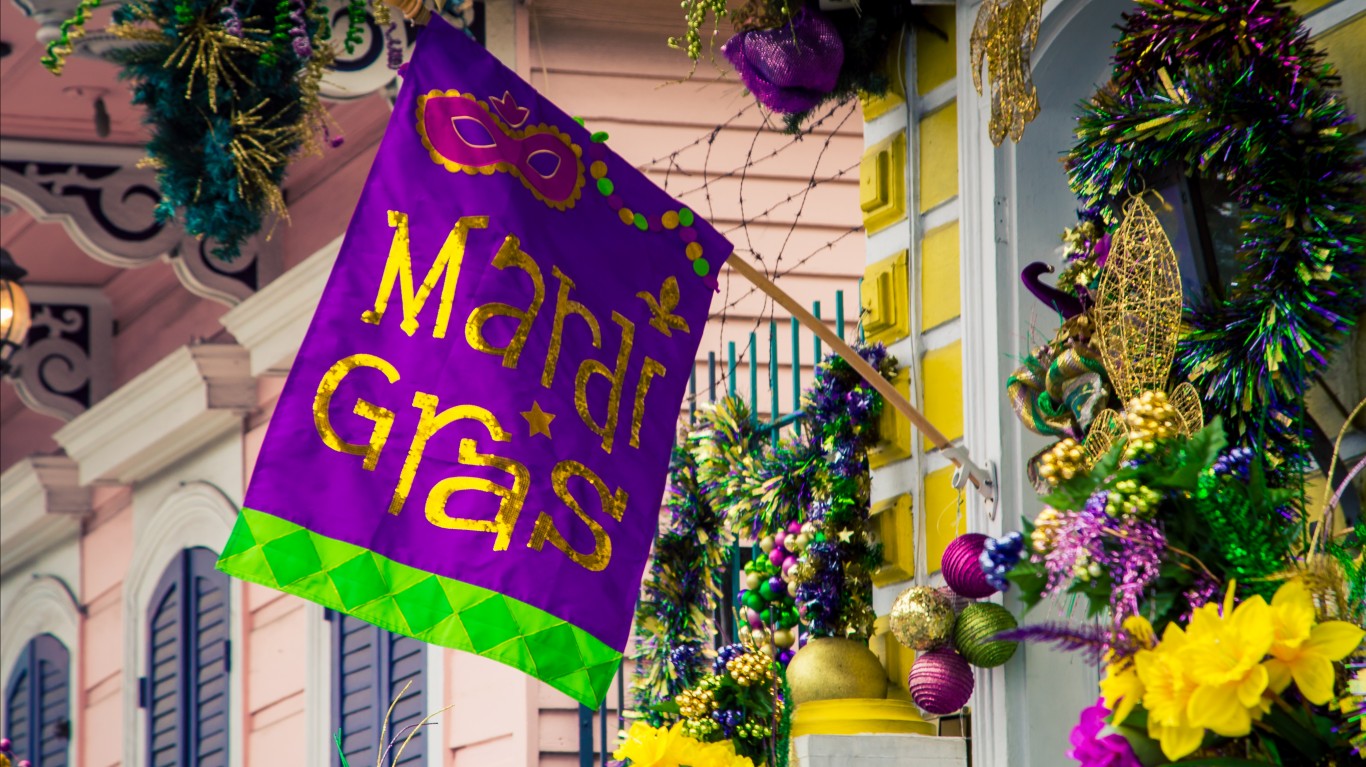
Mardi Gras
> Date: Feb. 21, 2023
The annual bacchanal that has made New Orleans famous is a Christian holiday whose antecedents go back thousands of years to pagan spring and fertility rites. Mardi Gras, aka Carnival or Carnaval, is observed in countries with large Roman Catholic populations. It is the last day before the religious season of Lent, when Catholics and some Protestants fast and/or abstain from meat on certain days, typically give up something they like (alcohol, chocolate, television, etc.) for the period’s 40-day span, and seek penance leading up to Easter Sunday.
Traditionally, in the days before Lent, revelers would binge on rich, fatty foods because they could only eat fish or vegetables during Lent. Indeed, the word “carnival” is derived from the Latin word carnelevarium, meaning to take away or remove meat.
After the French founded New Orleans, they created the Mardi Gras celebration that we are familiar with – street parties, masked balls, and lavish dinners. The colorful beads and floats would come later.
Want to Retire Early? Start Here (Sponsor)
Want retirement to come a few years earlier than you’d planned? Or are you ready to retire now, but want an extra set of eyes on your finances?
Now you can speak with up to 3 financial experts in your area for FREE. By simply clicking here you can begin to match with financial professionals who can help you build your plan to retire early. And the best part? The first conversation with them is free.
Click here to match with up to 3 financial pros who would be excited to help you make financial decisions.
Have questions about retirement or personal finance? Email us at [email protected]!
By emailing your questions to 24/7 Wall St., you agree to have them published anonymously on a673b.bigscoots-temp.com.
By submitting your story, you understand and agree that we may use your story, or versions of it, in all media and platforms, including via third parties.
Thank you for reading! Have some feedback for us?
Contact the 24/7 Wall St. editorial team.
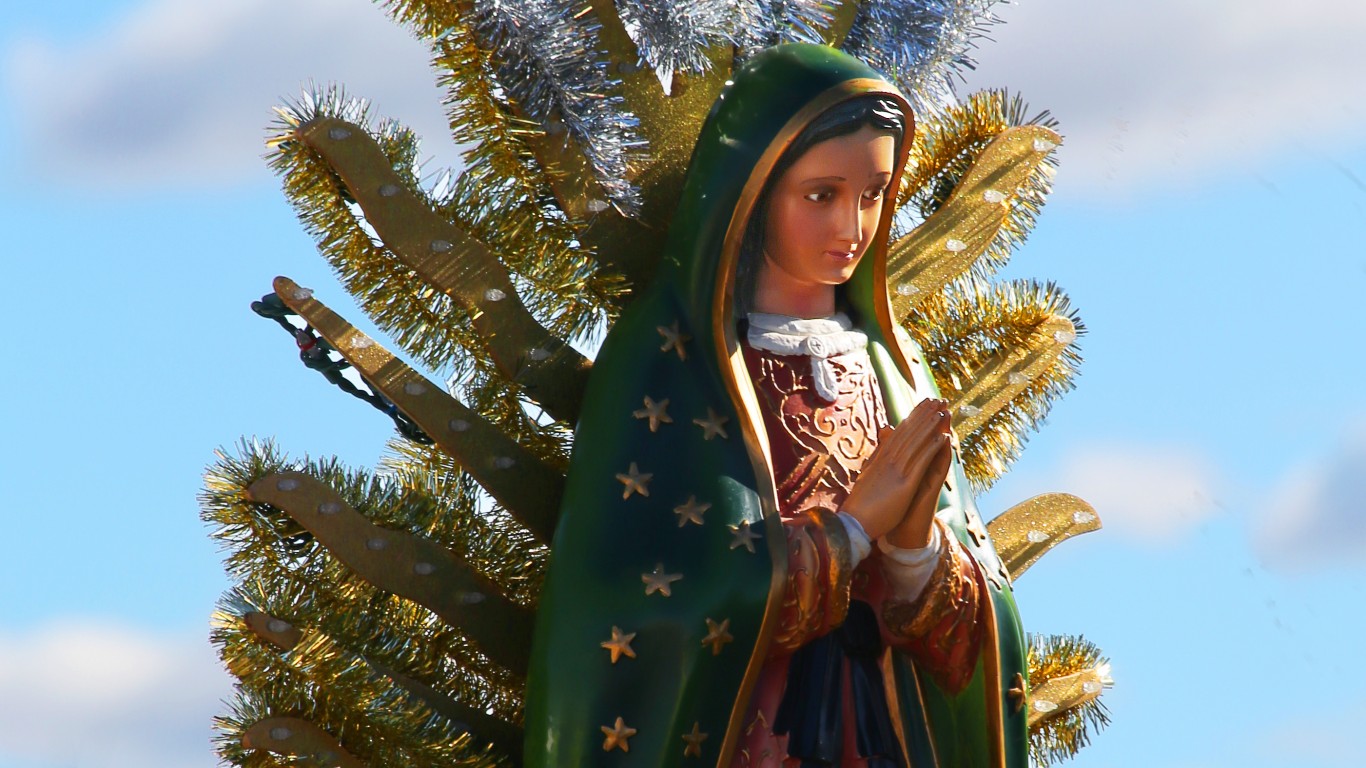
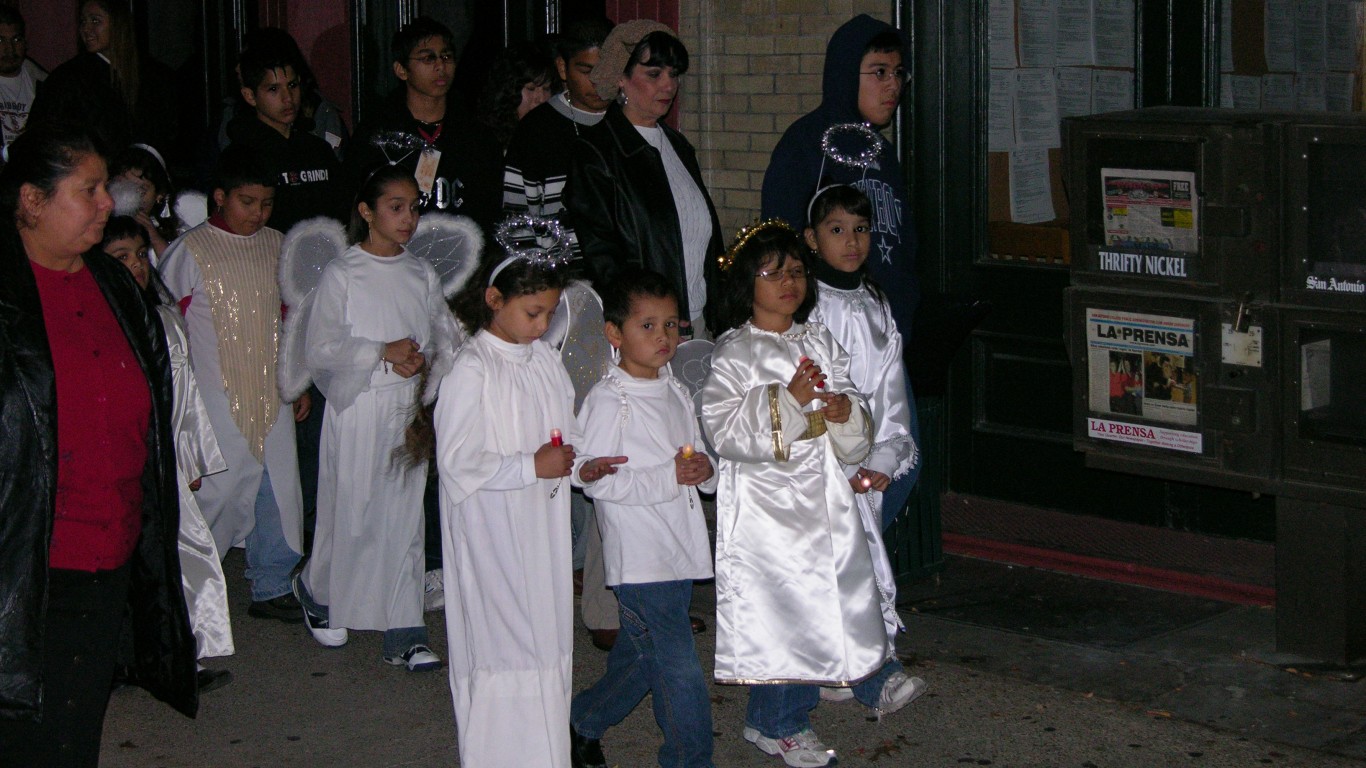
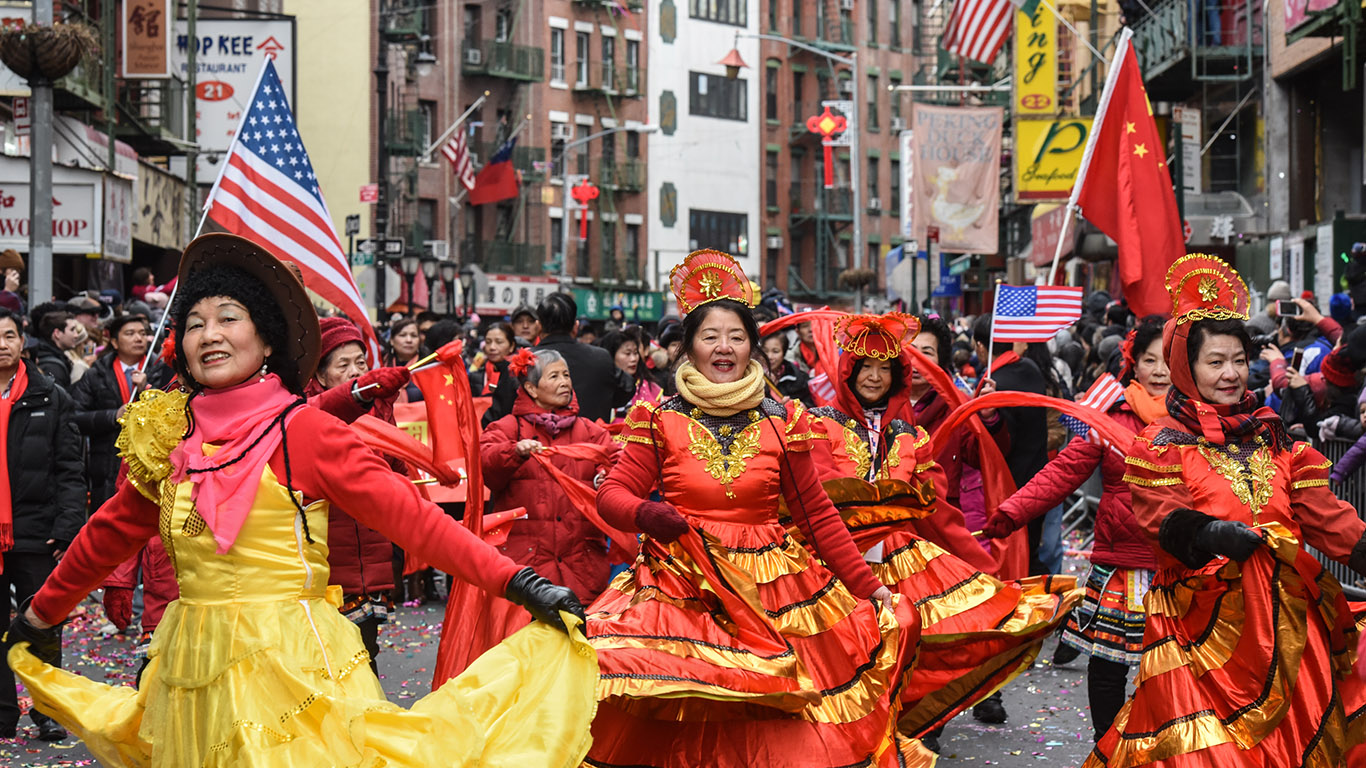 24/7 Wall St.
24/7 Wall St.